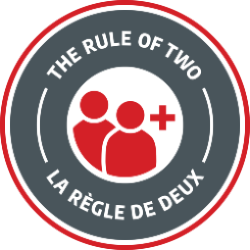Bedford Classic - Tie-Breaking Process and Guidelines

Based on Win/Loss records in Round Robin Play and Point Differential Ratio
(*see note at end re max 25 point differential cap)
1. Two-way Tie - Head to Head Method
If a tie exists between two (2) teams at the completion of the schedule, the winner of the game played by the two teams involved (head to head match-up) will be given priority ranking.
2. Three-way Tie - Points for and Against Method
If a tie exists between three (3) or more teams, the Points for and Against Method will be used.
a) Scores against the team(s) NOT involved in the three-way tie are discarded.
b) The total points scored and allowed for each game is calculated of the teams involved in the three-way tie.
c) The team with the highest Points For and Against value ratio will be given priority ranking.
d) The team with the second highest Points For and Against value ratio will be given the secondary ranking.
Example: 3 Pool Games of the 3 Teams Tied
Game 1 - A 50 - B 45 Game 2 - B 60 - C 38 Game 3 - C 45 - A 37
Team A - 87 points for/90 points against = 0.967 Team B -105 points for/88 points against = 1.193 Team C - 83 points for/ 97 points against = 0.8556
Team B receives the priority ranking. Team A receives the secondary ranking. Team C finishes third.
3. Two-way Tie Persists - Head to Head Method
If a tie exists between two (2) teams after using the Three-way Tie - Points for and
Against Value Ratio Method, the winner of the game played by the two teams involved (head to head match-up) will be given priority ranking.
4. Three-way Tie Persists - Additional Pool Play Result
If a tie persists between three (3) teams after the Points For and Against Method is used.
The Game against the remaining team in the pool will be added to the calculation to determine who is given priority ranking. If a tie persists between two teams after the additional score is used the head to head method will be used to determine the priority ranking.
5. Three-way Tie Persists after Additional Pool Play Result - Number Draw
The numbers one, two and three are written on a piece of paper by a neutral third party and placed in a hat, bag or other suitable container. The container is to be held above the eye level of the coaches.
The coaches then draw one number from the container, beginning with the highest seeded team and ending with the lowest seeded.
Number one (1) shall represent the priority ranking, number two (2) the secondary ranking and number three (3) third.
The Team that draws the number one (1) receives the priority ranking. The Team that draws the number two (2) receives the secondary ranking. The Team that draws the number three (3) is third.
NOTE: The method above will be used with the following stipulation: the maximum point differential a team may win or lose in any one game is 25 points. For example, Team A beats Team B 100-62, by 38 points. However, the score used in the tiebreaker calculation would be 87-62 for Team A, a 25 point spread. This rule is set up to prevent teams from being placed in the ethical dilemma of running up the score in order to secure a specific ranking in their bracket.


